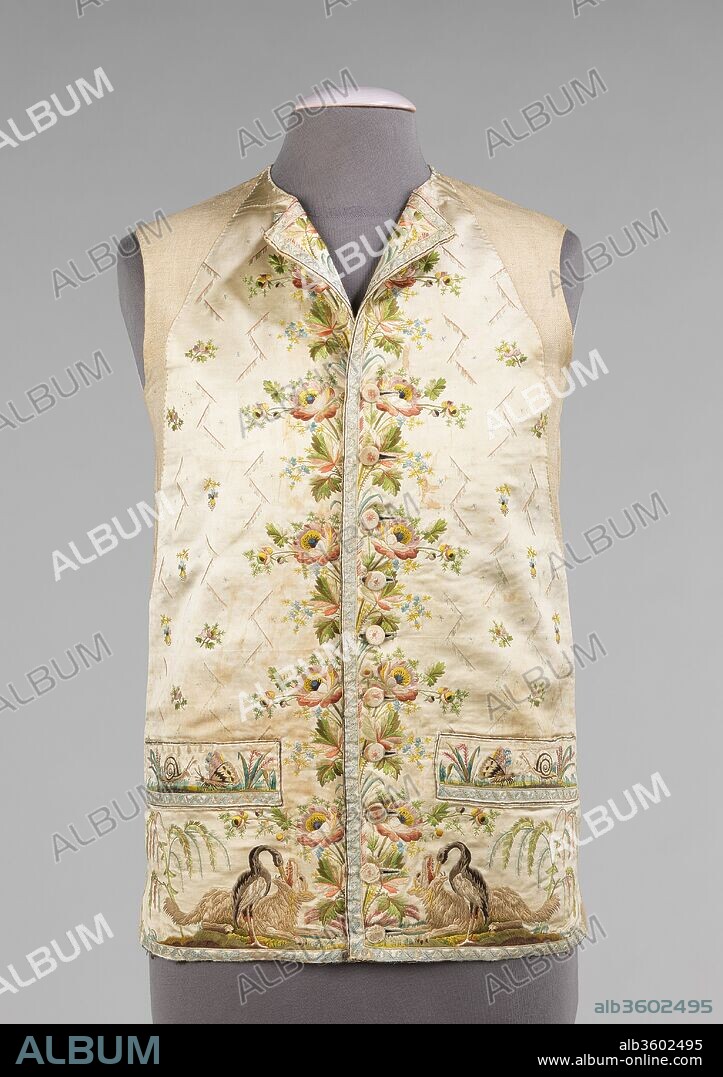alb3602495
WAISTCOAT

|
Zu einem anderen Lightbox hinzufügen |
|
Zu einem anderen Lightbox hinzufügen |



Haben Sie bereits ein Konto? Anmelden
Sie haben kein Konto? Registrieren
Dieses Bild kaufen

Titel:
WAISTCOAT
Untertitel:
Siehe automatische Übersetzung
Waistcoat. Culture: French. Date: 1780-1800.
Waistcoats and vests of the 18th and 19th centuries served as a layer protection and ornamentation during a period in fashion when the coat was intended to be left open in the front. The color was often chosen to complement the suit and covered in imaginative embroideries, heavily woven patterns or shiny satins made to draw the eye. The style of the neck, the length and the hem treatment fluctuated as the tastes changed from over-sized coats of the early 18th century to narrow tightly fitted coats of the late 18th century and onward.
The embroidery motifs on this vest depict Aesop's (620-560 BC) tale of "The Wolf and the Crane." The fable, which was re-introduced in the 17th century by Jean de La Fontaine (1621-1695), contains a wolf that needs assistance removing a bone from his throat with a crane kind enough to assist. The beautiful embroidery is very playful and indicative of the status of the waistcoat as decoration.
Technik/Material:
silk, cotton
Museum:
Metropolitan Museum of Art, New York, USA
Bildnachweis:
Album / Metropolitan Museum of Art, NY
Freigaben (Releases):
Model: Nein - Eigentum: Nein
Rechtefragen?
Rechtefragen?
Bildgröße:
3108 x 4400 px | 39.1 MB
Druckgröße:
26.3 x 37.3 cm | 10.4 x 14.7 in (300 dpi)
Schlüsselwörter:
 Pinterest
Pinterest Twitter
Twitter Facebook
Facebook Link kopieren
Link kopieren Email
Email
